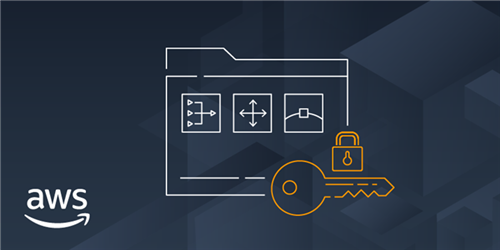
Microsoft is constantly changing and upgrading its certifications to make sure that you are at par with the demands of the IT industry today. The AZ-104 examination gets you a Microsoft certification for Azure Administrator associate. As an Azure Administrator, your responsibilities will include managing, implementing and monitoring the Azure environment of your organisation. You will also be responsible for computing, managing, storing, network resources and identity management on Azure.
The AZ-104 came as the successor exam for AZ-103 once the latter retired at the end of August 2020. The exam came with increased services of computing, storage and governance. The AZ-104 is giving more importance to identity management and implementation by using Azure AD for your organisation with the hybrid infrastructure or on-premise, role-based control of Azure resources and the management and subscription of multiple directories and access to the users.
What Is AZ-104?
AZ104 is an exam with an intermediate difficulty level in comparison to other role-based Microsoft exams. This exam can consist of questions from the 5 modules given below and case studies to ensure that you can understand the advanced technical topics.
-
Module 1: Manage Azure identities and Governance (15-20%)
-
Module 2: Implement and Manage Storage (10-15%)
-
Module 3: Deploy and Manage Azure Compute Resources (25-30%)
-
Module 4: Configure and Manage Virtual Networking (30-35%)
-
Module 5: Monitor and backup Azure Resources (10-15%)
You need to focus on the above exam objectives during your preparation for the AZ-104 Azure Administrator exam.
What Are The Prerequisites For AZ-104 Certification?
The following are the prerequisites for this certification:
-
At Least 6 months of hands-on experience with Azure administration
-
Strong understanding of Azure services, security, workloads and governance
What Is The AZ 104 Exam Pattern?
The exam consists of 60 odd questions to be attempted in a time span of 3 hours. This exam is divided into sections. Each section will need to be cleared for you to clear the exam. Usually, these sections contain multiple-choice questions, Yes/No type of questions, hands-on and case studies. These sections may be singular or multiple. You can traverse through all questions in all sections except the Yes/No one. The exam fee differs based on region. Indians will have to pay INR 4800 to take this exam. However, you can claim redemption if you have the referral voucher. Once you clear this exam, you will be awarded a certification mentioning Microsoft Certified Azure Administrator. This certification is valid for 2 years.
AZ-104 Exam Syllabus
What Is The Objective Of The AZ-104 Exam?
This exam is essential in training you for the role of Azure Administrator who needs good knowledge and experience in many aspects like:
-
Operating systems installation and configuration
-
Active Directory concepts, including domains, forests, domain controllers, replication, Kerberos protocol, and Lightweight Directory Access Protocol (LDAP)
-
Virtualization, including VMs, virtual networking, and virtual hard disks
-
Cloud infrastructure
-
Storage structures
-
Networking, including TCP/IP, Domain Name System (DNS), virtual private networks (VPNs), firewalls, and encryption technologies
-
Resilience and disaster recovery, including backup and restore operations
Also Read: What is Microsoft Azure Administrator AZ-104
What Skills Does The AZ-104 Exam Measure?
Microsoft has recently announced that they have suspended the performance-based lab questions because of the pandemic situation. This decision was taken to reserve the Azure capacity for paying customers. So, if you want to benefit from this, sit for the exam as soon as possible. Upon research, you will find that storage and networking are the two biggest subject areas covered in the exam. So you can expect a lot of tabular analysis and reading. If this is something that doesn’t come under your strengths, start preparing well in advance to avoid any surprises.
The questions related to configuration will test your hands-on experience in the Azure portal. If you know your material well, you will know the answer right away. If not, you may have to struggle with these questions.
The new Azure exam reflects many real-world Microsoft Azure scenarios.
How To Pass the AZ-104 Exam?
The following steps can help you minimise your efforts to pass the az 104 exam. here are a few golden steps:
-
Get All Relevant Information Beforehand
Before you start your preparation for this exam, you need to visit the official exam details page on the Microsoft website. All information on it is updated, trustworthy and authentic. This page will give you details about the eligibility criteria, prerequisites for the exam, objectives, registration fees, and exam schedules.
-
Understand The Topics For The Exam
Each exam has its own weights and modules. Hence, it is important for you to understand the exam objectives very carefully. The official website page of the exam will provide you with all information about the weightage of different modules in the exam. Once you have a good understanding of each module and domain, you can start your preparation. With this information, you can focus on the modules that hold high importance in the exam.
-
Consider Learning Online
One of the most convenient ways to train and practise for this exam is online training. In the online training courses, you have the chance to learn difficult concepts from industry experts. There are a few self-paced online training classes provided by Microsoft for the AZ-104 exam. A comprehensive study plan through an instructor-led training course can ensure that you are covering all topics and are updated with all the latest trends and changes in the exam topics.
-
Join Online Discussion Forums and Study Groups
Once you have all the necessary information for the exam, you should join discussion forums and study groups. This can open up opportunities for you to connect with others who are preparing for this exam. You can ask questions, answer other queries, interact with like-minded people, etc.
-
Practice!
The final step in your preparation should be practice. Practising writing the exam will boost your confidence and get you mentally and physically ready for the AZ-104 exam. Once you think that you have done all the prep you can, pay attention to some good simulators. These AZ104 simulators are designed to provide you with a real exam-writing environment. This exercise can help you understand your strengths and weaknesses so that you have the time to improve on your weak points.
Conclusion
The AZ 104 exam was designed and released by Microsoft after feedback was received on the AZ-100, AZ-101, and AZ-103 exams. This new exam is aimed at simplifying the path for you to become a successful Azure Administrator. If you dream of advancing your career in Azure Administration, take the AZ-104 exam. With this certification, you will be able to improve your skills and showcase them to your employers and help you stand out from the rest of the crowd.


min.pngM.jpg)

min.pngM.jpg)
.pngM.jpg)

COMMENT